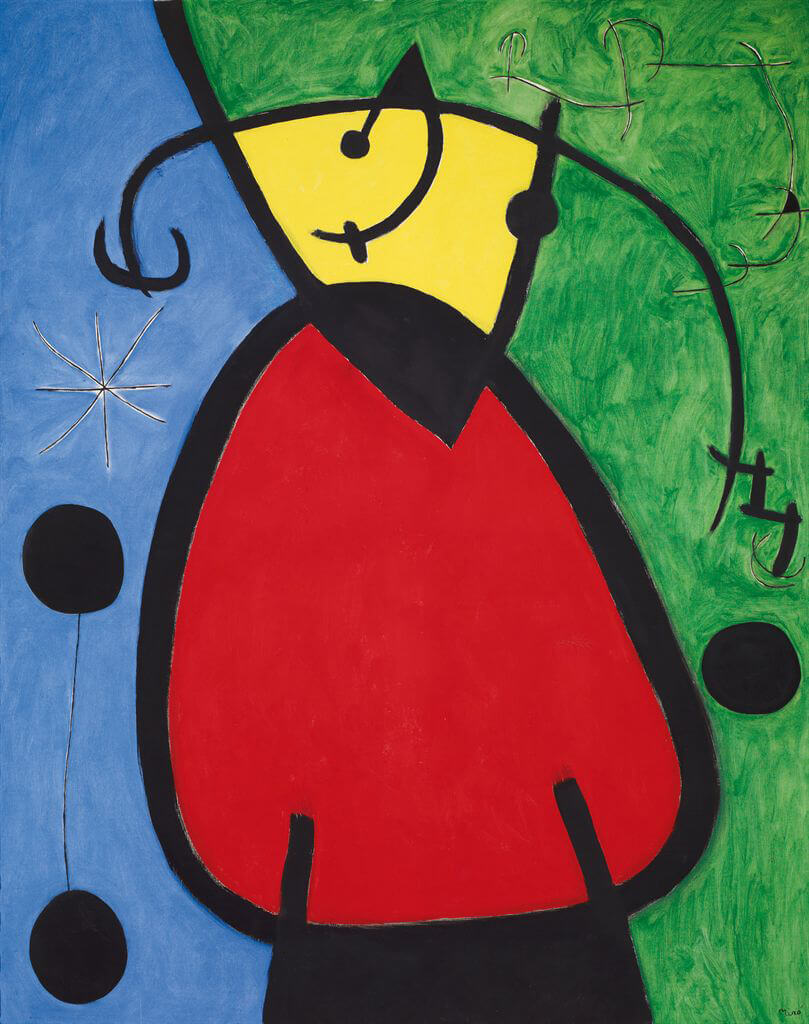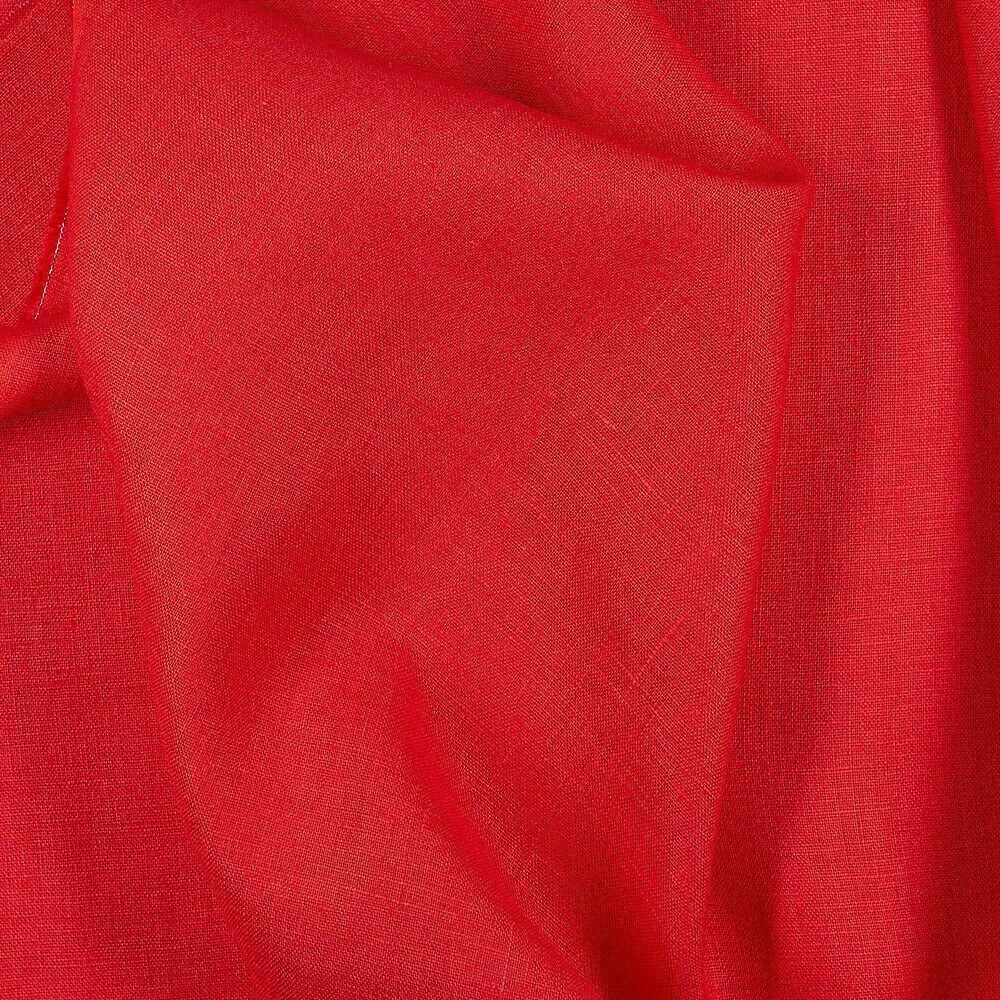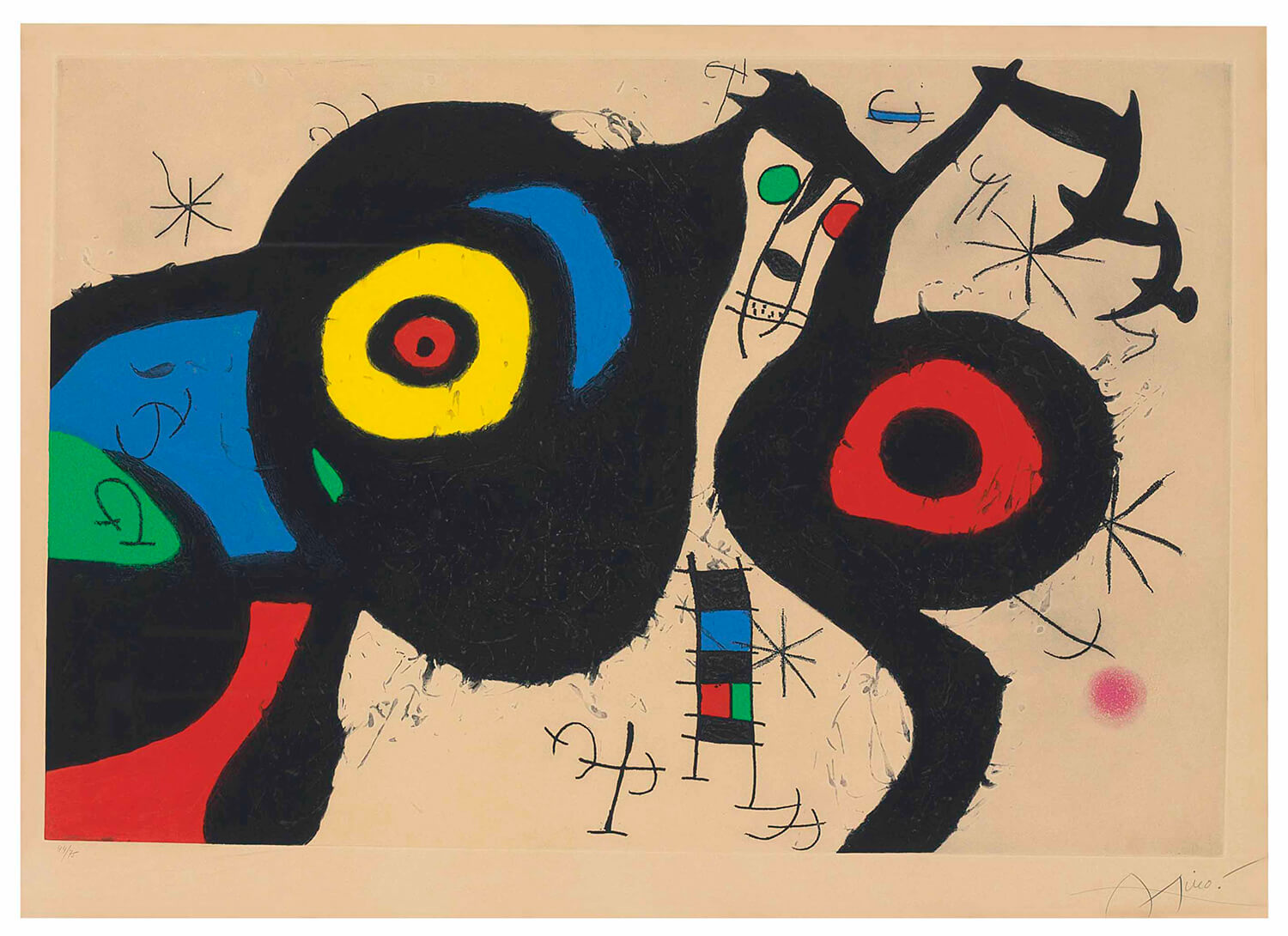FS Colour Series: FIERY RED Inspired by Joan Miro’s Blazing Heat
FIERY RED was a red-hot tool in the hands of Spanish painter and printmaker Joan Miro, adding flashes of intense, blazing heat to his daring Surrealist designs. He developed a deeply personal language that was playful and child-like, made up of swirling biomorphic forms and scattered geometric shapes coupled with brilliant dashes of black calligraphic line, creating a style that was as intimate and expressive as his own handwriting. Reds played a vital role in his eye-catching designs, selected as much for their striking visual impact as their deep associations with his Spanish heritage.
Miro was born in 1893 in Barcelona to a family of skilled makers; his father made watches, while his maternal grandfather was a cabinetmaker. He adopted the habit of drawing from a young age, preferring to lose himself in quiet doodles and daydreams rather than the rigours of school. At the age of 14, Miro’s naturally inquisitive, creative nature gained him entry into the School of Industrial and Fine Arts in Barcelona in 1907. Following a period of severe illness, Miro spent time recovering on the family farm in Montroig on the outskirts of Barcelona, but he found art to be a creative outlet during this quiet, contemplative period of convalescence.
In 1912 Miro took up further studies in Barcelona, and it was during these art classes that the artist began to feel his way towards abstract ways of making art. His art of this period was representational, but he was heavily influenced by the work of French Post-Impressionist and Fauvist artists, with intense, artificially bright colours, and expressive, fluid paint. Over the next decade, Miro travelled to Paris to immerse himself more closely with the French art that had shaped his way of thinking and seeing art, and he came face-to-face with the burgeoning styles of Cubism and Surrealism, which forever altered his artistic approach. On his return to Spain, he experienced a period of creative flowering, producing some of his earliest examples of Surrealist-infused abstraction. Over the next decade, Miro moved simultaneously between Paris and Spain, finding ways of merging influences from both cultures into his art. He found widespread recognition and success during the 1930s for this work, earning an international following for his quirky brand of semi-abstraction.
Throughout World War II Miro’s life was filled with upheavals and uncertainties as he was forced to relocate on numerous occasions. It wasn’t until the 1950s that he was able to settle into a routine of moving between Paris and Spain, as he had done some decades earlier. During the 1960s, this relative stability could be seen in his mature art, which demonstrated the artist’s expansive confidence and unbridled creative freedom. In the playfully bright Femme et Oiseaux Dans la Nuit, 1968, Miro combines three of his recurring themes: women, birds and night, all morphed into a singular, succinct abstract motif. Blazing hot red is the standout colour here, outlined with thick black contours to suggest a feminine form, while cooler colours gravitate around its edges.
Printmaking played a vital role in Miro’s late art, offering him a greater freedom to recreate the same designs again and again but with subtle variations between one and the next. In the etching on paper Les Deux Amis, 1969, Miro plays with whirling, biomorphic forms drawn out in dark, black shapes and lines onto a white background as if moving organically through space. Two intense patches of red form circular targets or red eyes staring back at us with wide-eyed curiosity, one outlined in yellow to enhance its theatrical impact. Made towards the end of Miro’s life, the rich and complex lithograph Onesime, 1975, toys with how the same dashing shade of red can add flashes of dazzling brilliance in amongst black and areas of scumbled texture, demonstrating Miro’s uncanny ability to create living, breathing forms with the simplest of marks and means.





















































One Comment
Vicki Lang
Love the bold use of color and design in Miro’s paintings. Really makes you notice. As always I love that you bring wonderful artists to the for front with your articles. Thank you.